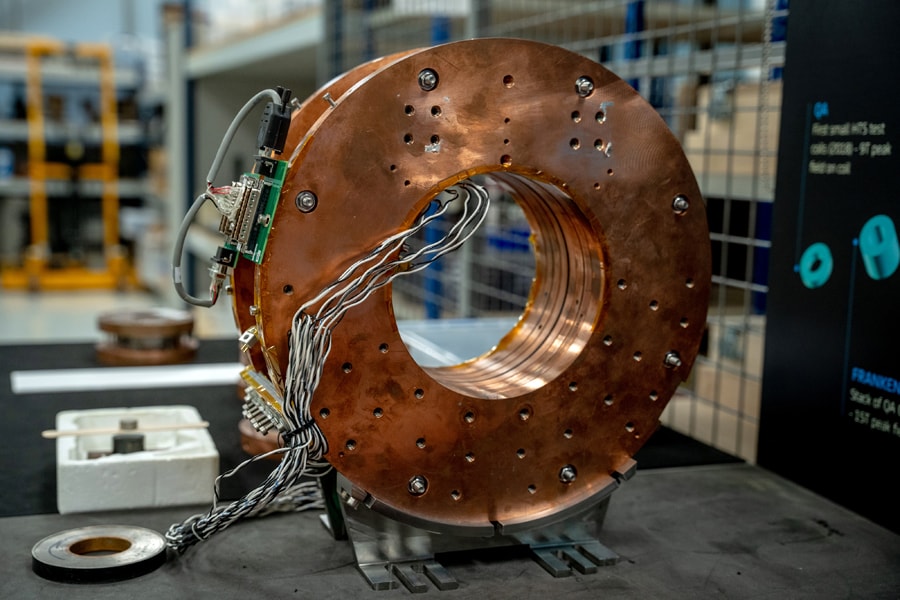
Nuclear fusion edges toward the mainstream
Investor interest in fusion energy continues to slowly rise, and the number of startups in the field is multiplying, with an estimated 1,100 people in several countries making their living at these firms
 A powerful magnet of the type used in fusion devices in a lab at Tokamak Energy in Abingdon, England, on Aug. 23, 2021. Tokamak is beginning to license the know-how behind its magnets, which it uses to contain and compress the superheated gas. (Andrew Testa for The New York Times)
A powerful magnet of the type used in fusion devices in a lab at Tokamak Energy in Abingdon, England, on Aug. 23, 2021. Tokamak is beginning to license the know-how behind its magnets, which it uses to contain and compress the superheated gas. (Andrew Testa for The New York Times)
Harnessing fusion energy into something commercially viable — and maybe, ultimately, a clean source of power that replaces fossil fuels for centuries to come — has long been considered by some as the ultimate moonshot.
But investor interest in fusion energy continues to slowly rise, and the number of startups in the field is multiplying, with an estimated 1,100 people in several countries making their living at these firms. An industry is taking shape, with a growing network of companies that supply highly specialized equipment, like the components of the powerful magnets that fusion devices require.
The British government even recently saw the need to issue regulations for fusion energy — a kind of milestone for a burgeoning industry.
No one knows when fusion energy will become commercially viable, but driving the private investments is a rising alarm about global warming.
“Nobody has a better plan to deal with the climate crisis,” said David Kingham, one of the three co-founders of a company called Tokamak Energy that has raised about $200 million, mostly from private sources.
©2019 New York Times News Service







